One of the most remote and yet most enviable places to visit on Scotland’s mainland is the majestic North Coast 500, aka the NC500. Rebranded as Scotland's Route 66 back in 2015, it is an area that promises sweeping sea views, gold sand beaches, and rugged mountains.
If you would like to drive the North Coast 500, or even just a part of it, you're in the right place. With this NC500 guide, you can prepare for your visit and get excited about all the sights you could explore.
- Browse these North Coast 500 tours to start planning your road trip
Contents:
- The North Coast 500 route
- The North Coast 500 highlights
- How many days should I calculate for the drive?
- When to visit the NC500
- How to plan a car hire
- Where to stay
- Road safety tips
- Suggested packing list
The North Coast 500 route
The NC500 route traces the top section of mainland Scotland in a loop. This remote part of the country is becoming more and more popular, especially with lovers of the great outdoors and road trippers.
It gets its name from the length of the loop, which stands at just over 500 miles, or 516 miles (830km) to be exact. This scenic circuit will take you across 6 regions: Inverness-shire, Wester Ross, Easter Ross, Sutherland, Caithness, and the Black Isle.
Most people will start in Inverness. Known as the “Capital of the Highlands”, it is the first point of entry of any North Coast 500 itinerary.
If you go anti-clockwise, you'll follow the east coast. This will take you up the most northerly point of the mainland United Kingdom.
From this point, you’ll follow the north coast, then down the west coast, passing by the famous Ullapool and Torridon Hills. After Applecross, the last section of the loop takes you back to Inverness.
As it is a little less scenic, many people ditch the last part of the loop to pop over to the Isle of Skye. Others prefer the drive down the west coast, via Fort William and Glen Coe.
- Browse these self-drive tours of Scotland to come experience the best driving routes
- You could also discover the country with a local guide on a privately guided tour of Scotland
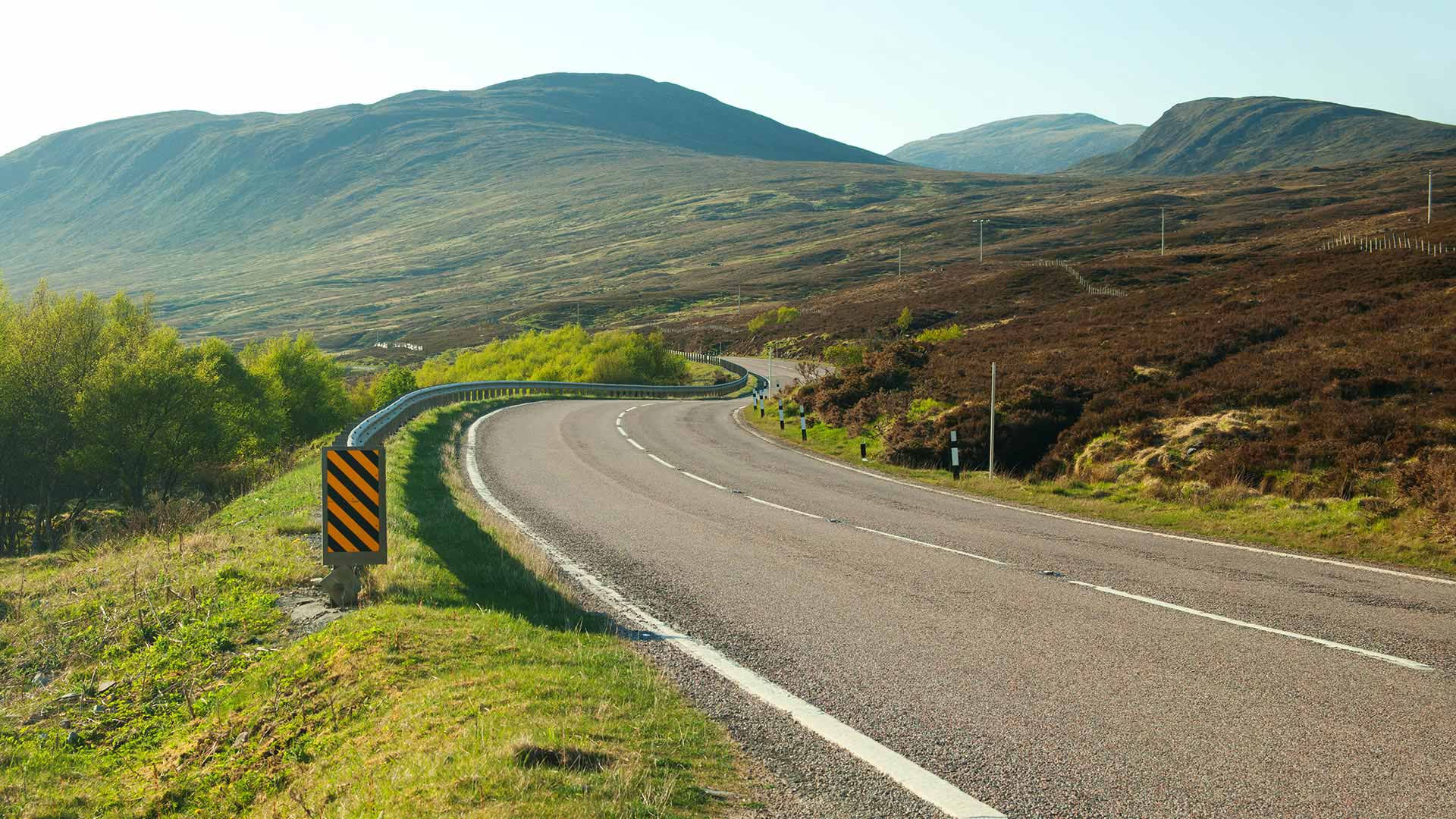
The North Coast 500 highlights
The NC500 isn’t only a beautiful road with outstanding scenery, there is also plenty to see and lots to visit along the way. You can expect stunning photography opportunities, scenic beaches, mountains for hiking, and more.
You definitely will not be bored on this route. The biggest challenge may be narrowing down your stops to fit into your itinerary.
Below we’ve compiled our favourite attractions that we believe are worth a visit:
1. The Black Isle and Chanonry Point
Just north of Inverness, you’ll find the Black Isle peninsula. It is famous for its beautiful fields, vibrant food and drink scene (including local craft beer) and dolphin spotting. You read that right, dolphin spotting in Scotland!
Chanonry Point is the famous location on the Black Isle where you’ll have the chance to catch sight of dolphins in the Moray Firth. You’re most likely to spot dolphins on a rising tide, which is about 1 hour after low tide, so check the daily timetables.
2. Dunrobin Castle
If you love visiting grand houses and castles, you’ll want to make a stop at Dunrobin Castle on your way north. It has been the home of the Earls and Dukes of Sutherland since the 13th century.
Dunrobin is located on the east coast, halfway up toward John O’ Groats. A fun fact to know is that it is the most northerly grand house in Scotland, and the largest in the Northern Highlands.
The house is open to visitors between April and October, including the museum, gardens and even a daily falconry display.
- Check out these Scottish castle tour packages
- Related: 12 best castles to visit in Scotland
3. Dunnet Point and John O’Groats
John O’Groats is often recognised as the most northerly point of mainland Scotland and Britain. In fact, Dunnet Point holds that title!
This is a good area to base yourself and stop for some day trips. Nearby you could go for a walk by the sea cliffs and admire the famous Duncansby Stacks. You could also visit Castle of Mey, once owned by Her Majesty Queen Elizabeth The Queen Mother.
4. Smoo Cave
One of the highlights along the northern coast is Smoo Cave, which we recommend highly. Smoo Cave is the largest and most dramatic sea cave in Britain.
Entrance is free, but there is a 20-minute geological cave tour that you can also book on site. It is available between April and September but is weather dependent.
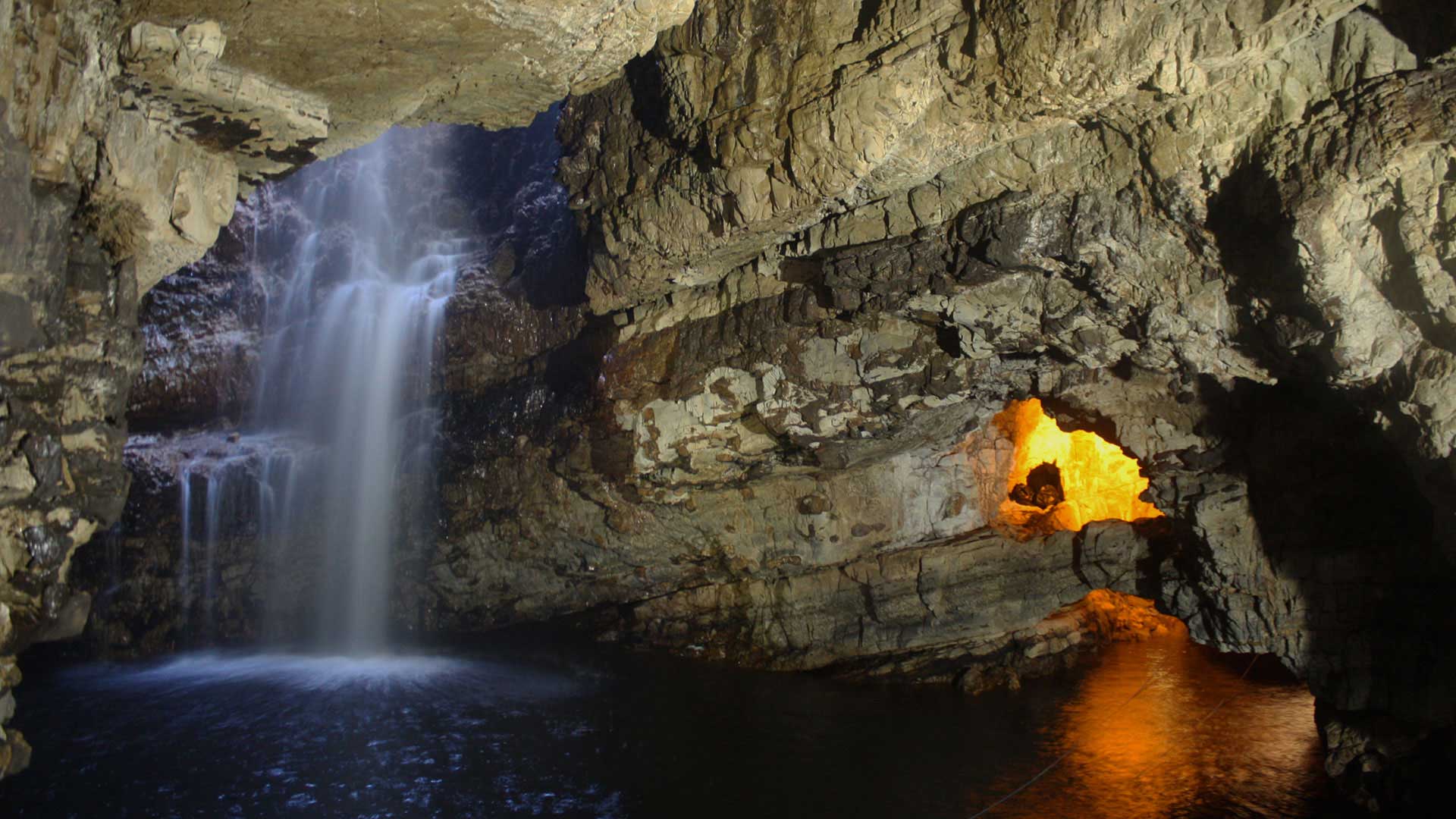
5. Durness Beach
If you drive across the northern part of the NC500 on a beautiful sunny day, you may want to stop at the pristine beach of Durness. You won’t believe you’re in Scotland, especially with the turquoise waters.
Planning a picnic in such iconic locations? We recommend familiarising yourself with the Scottish Outdoor Access Code.
- Discover more about remote corners with these off-the-beaten-path tours of Scotland
- Related: Best beaches in Scotland
6. Ardvreck Castle
On the west coast, you could stop to explore the ruins of the 15th-century Ardvreck Castle. The remains of the castle lie on a promontory that juts into Loch Assynt, providing a lovely view over the surroundings.
7. Inverewe Garden
Then follow the scenic road along the west coast towards Gairloch. Here you will come to the town of Poolewe where you can explore the Inverewe Garden.
You can roam the 49 acres of land that boast some 2,500 exotic plants and flowers. They flourish in northern Scotland thanks to the warm currents of the Gulf Stream.
It’s also a perfect location to try to spot Scotland’s Big 5: red squirrels, red deer, otters, seals and golden eagles.
8. Ullapool
You’ll then cross the curved Kylesku Bridge to arrive at the charming and whitewashed village of Ullapool. This is another ideal stop, either for the night or as a base for a few days of exploration in the area.
This is also where you can take the ferry to go discover the Scottish isles. Sail to Stornoway to discover the Outer Hebrides.
It offers nice dining options and an opportunity to take part in cultural events, such as music and arts, food and drink, and history.
- Come learn more about culture and history with these Scottish Heritage tours
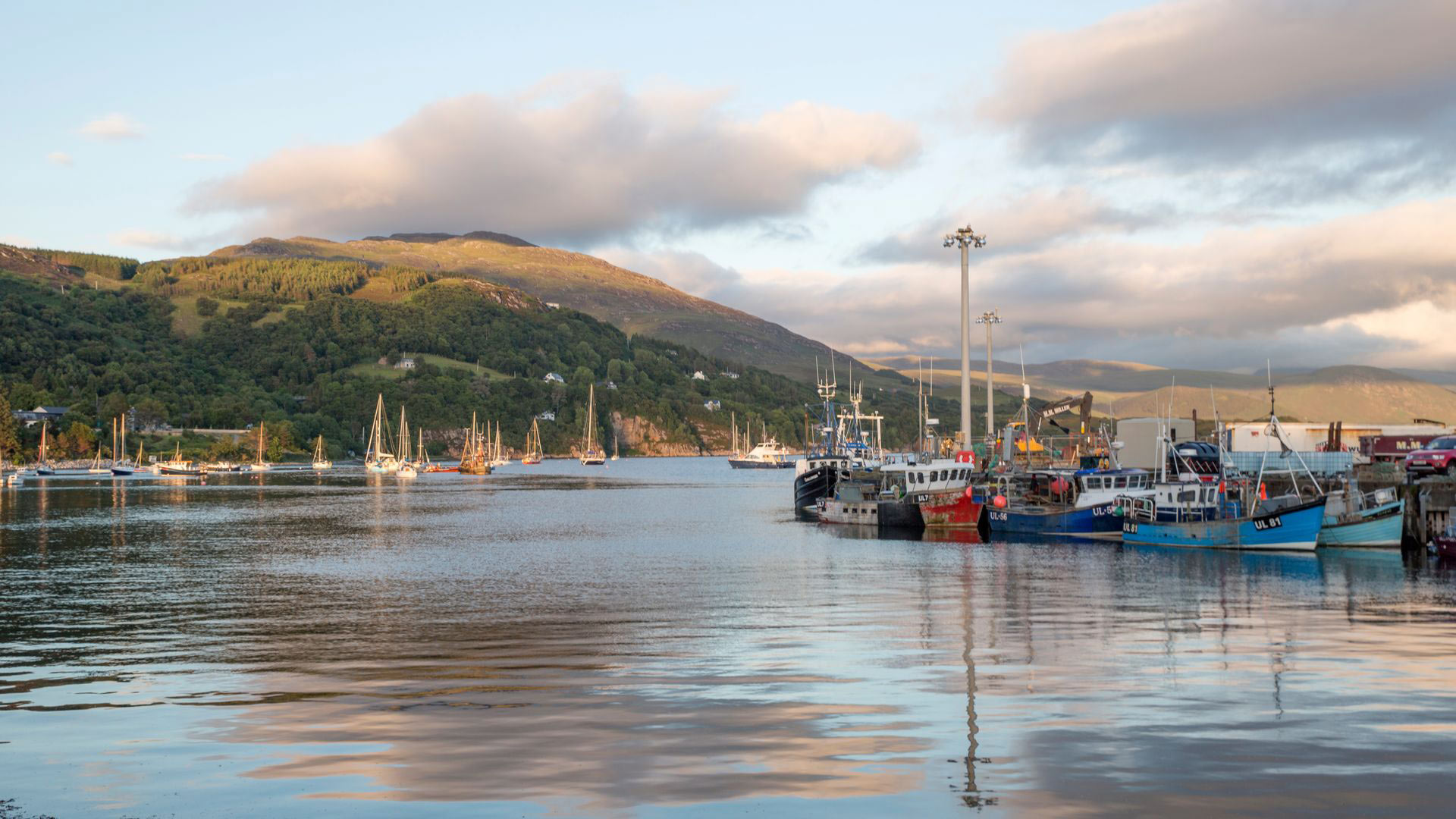
9. Corrieshalloch Gorge
Located on the NC500, 12 miles east of Ullapool, you’ll find another one of our favourites. We recommend visiting the breathtaking 61-metre (200-feet) deep Corrieshalloch Gorge and the Falls of Measach.
Here you can walk across the Victorian suspension bridge over the gorge. This is also a good location to spot wildlife, especially the many birds that soar high above. It is a National Nature Reserve in recognition of its spectacular natural beauty.
10. Glenmorangie Distillery
There are a few whisky distilleries in the North Highlands, but one of the most well-known might be Glenmorangie. Come have a whisky tasting, a must-do in Scotland. There are also gin distilleries and local breweries, if that’s what you fancy.
Please note: We want to remind you that Scotland effectively has a zero-tolerance policy when it comes to drinking and driving. The Scottish Government website advises that "just one drink could put you over the legal limit for driving".
So make sure to be safe and assign a designated driver if you intend on visiting a distillery. Nordic Visitor Scotland self-drive packages include two authorised drivers as standard. This means one of you can take the day off if a distillery visit is on the cards.
How many days should I calculate for the drive?
The right amount of time to spend around the North Coast 500 depends on what's right for you.
For the entirety of the loop, you’ll probably want at least a 5- or 7-day itinerary. But again it depends, on how quickly or slowly you want to drive. You should also consider what you'd like to visit and how much to do each day.
The best recommendation is to pick a few bases and explore around those areas. This will allow you time to really dive into specific regions and get settled in a bit more.
You could also opt to only take a day or two out of your Scotland tour to drive part of the NC500. Even just a taste is better than nothing if you don't have the time to really dedicate to it. Whatever suits you best!
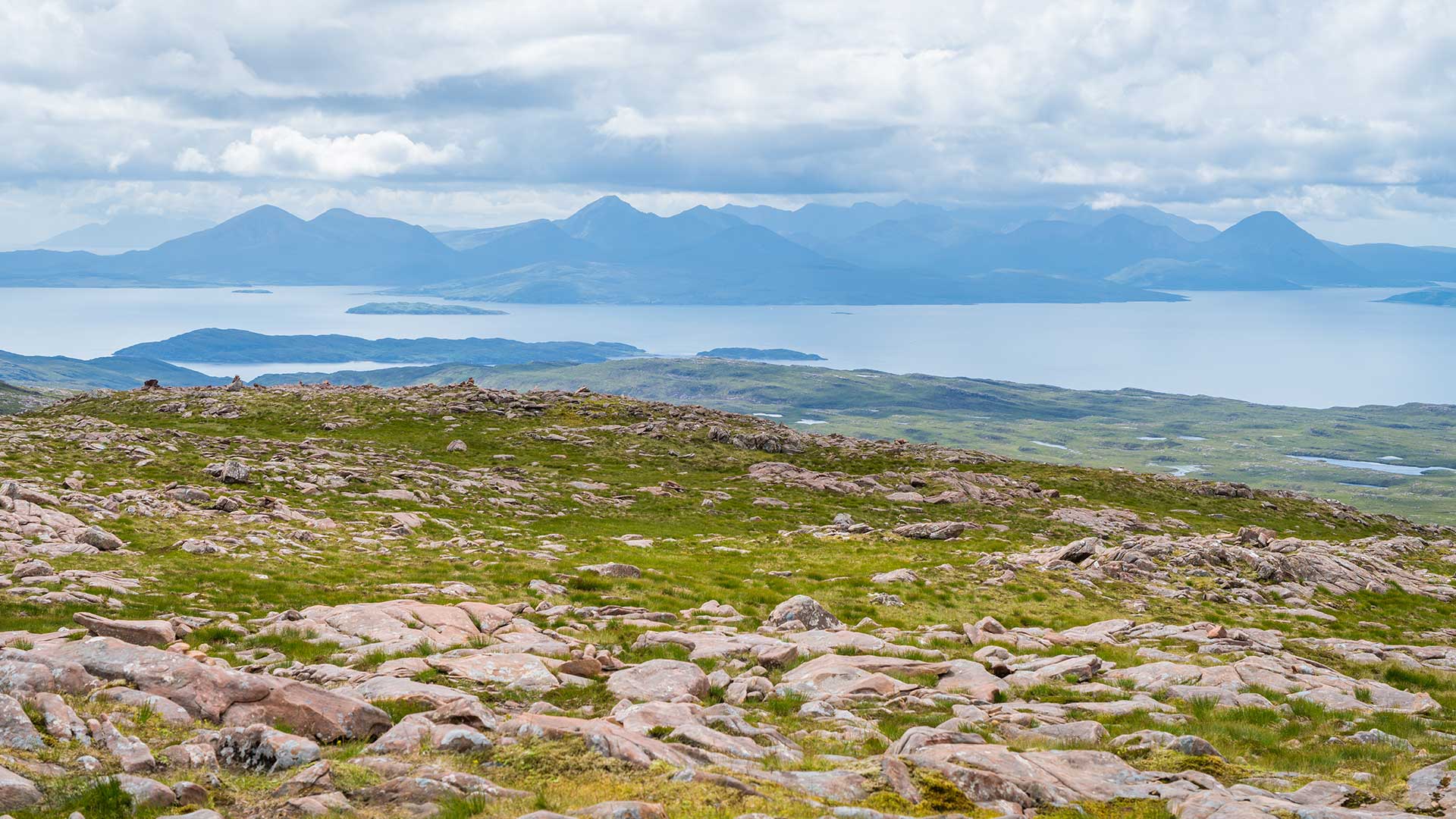
When to visit the NC500
This is another question that only you can answer. Do you have pre-booked vacation? Are you planning a trip during school holidays or for a post-wedding honeymoon? Let these details help you plan the trip of your dream.
If your schedule is flexible, we recommend the April to October period. This is ideal if you're looking for the most daylight hours, open attractions, and more options for accommodation.
During this period of the year the roads are generally the most accessible. You should be able to spot more wildlife and, as noted above, certain highlights (such as castles) are only open to the public during the high season.
The one thing to be aware of when you visit between June and August is the fact that it attracts the most visitors. It means you may not be alone enjoying the sights.
Visiting Scotland during the shoulder months can be just as lovely but quieter. You'll be rewarded with the colourful foliage of the woodland.
- Come visit with a summer itinerary in Scotland
- Related: Your guide to the best time to visit Scotland
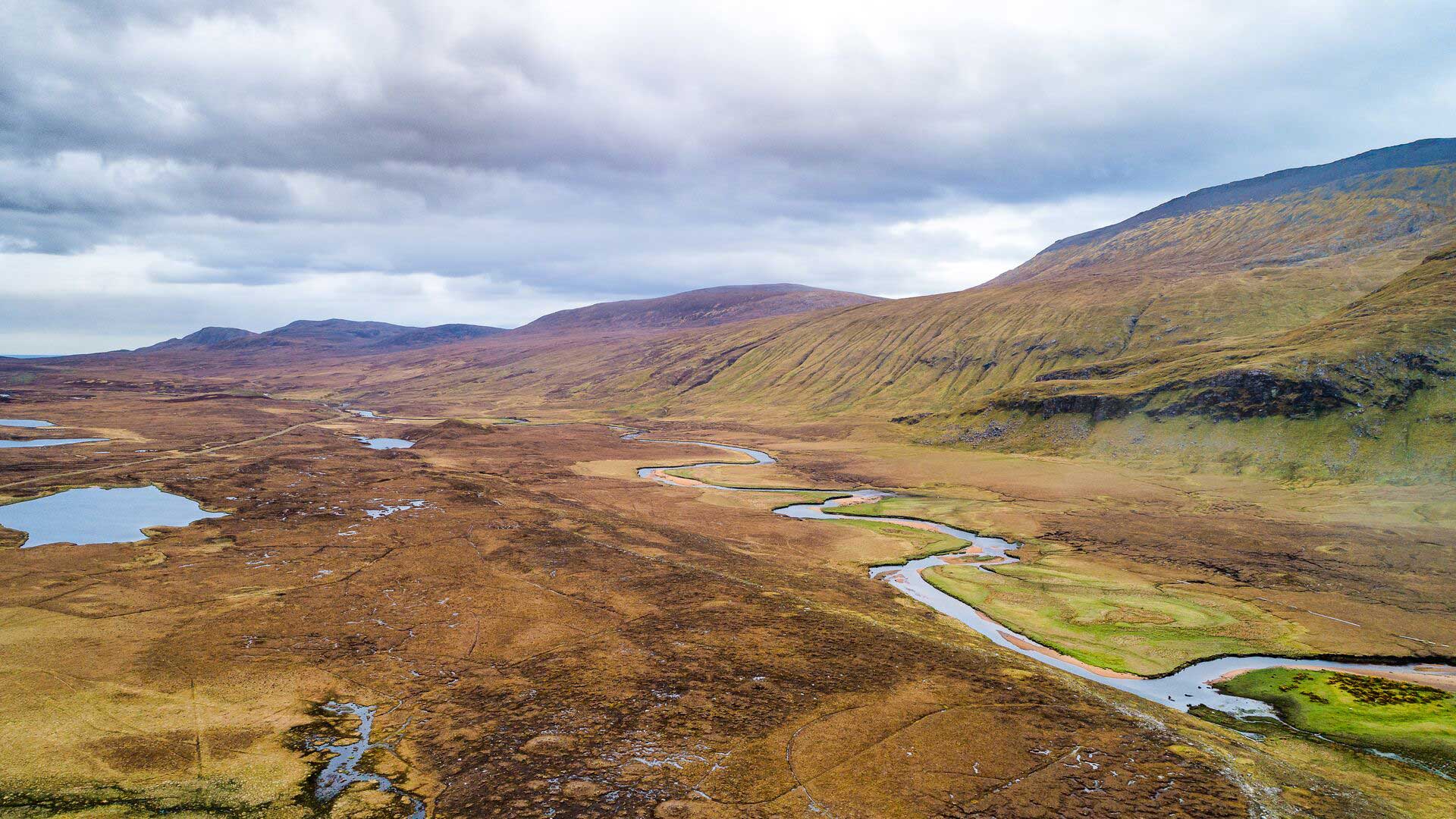
- Browse these Scotland honeymoon and romance packages
- Related: Why Scotland is perfect for romantic breaks and getaways
How to plan a car hire
We recommend hiring a car in Scotland, as it is the best and most popular means to get around.
There are plenty of car rental options in Glasgow or in Edinburgh, depending on your arrival port to Scotland. You could also take the train to Inverness and rent a car from there if you want to reduce your driving time.
If you’re not keen to research rental agencies and book a car yourself, why not have someone do it all for you?
The advantage of booking with Nordic Visitor is that we’ve already done the homework on the best quality car hire agencies.
What’s more, we include an extra driver at no additional cost on your rental contract, so you can share the drive. We also include a GPS navigation system.
Another bonus? You'll get a hand-drawn map with some local tips. As the phone reception is shaky at best in the NC500, you cannot and should not rely solely on your GPS navigation.
Just remember, you’ll need a valid credit card and a valid driving licence to pick up the car to start your road trip.
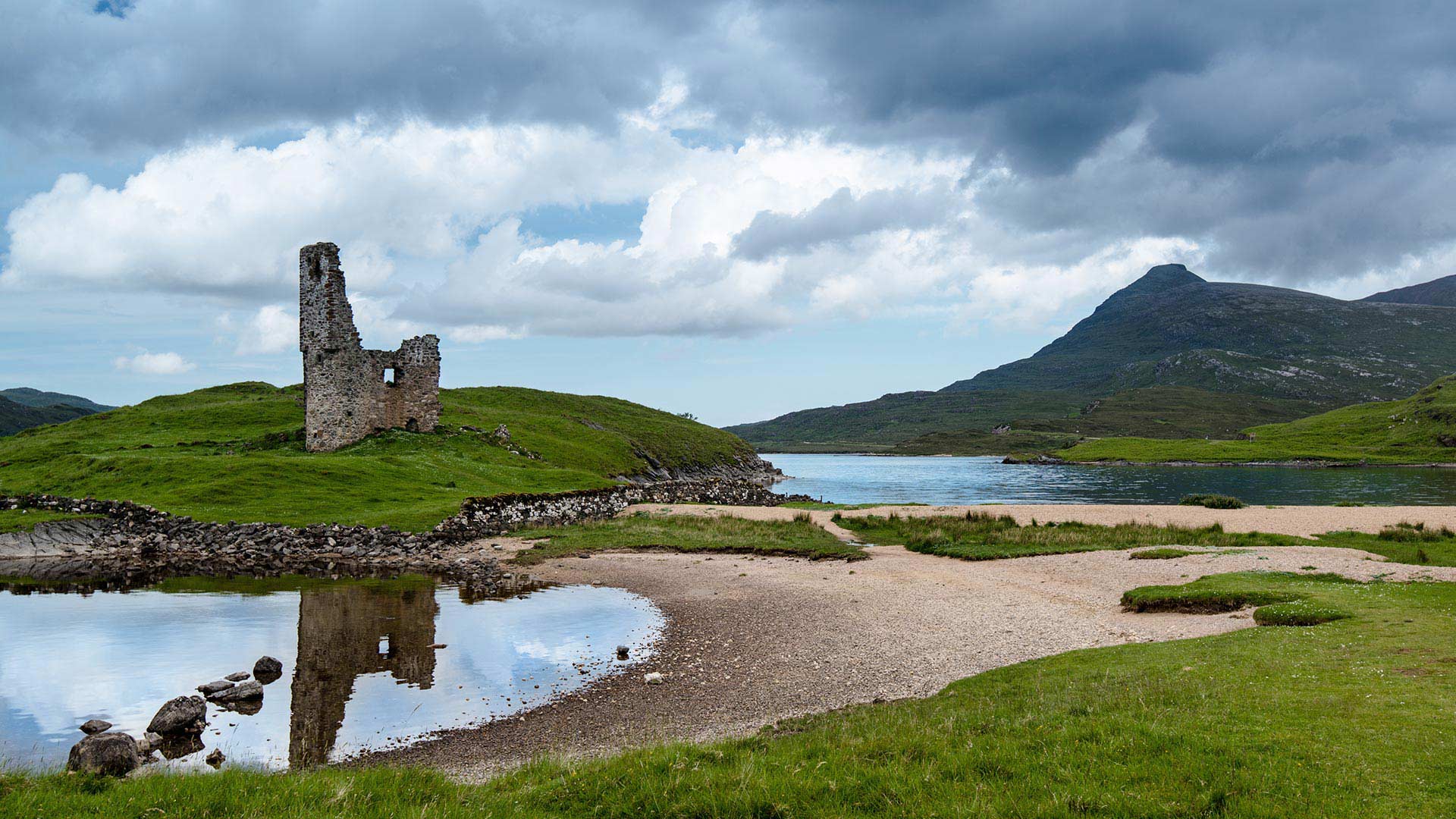
Where to stay
There are plenty of accommodations along the NC500 route but keep in mind that you should book in advance if possible, especially if you have a special place in mind. This is because the North Coast 500 is very popular, and during the high season, accommodation can book out really early.
There are two ways that you can plan your itinerary:
- Pick how many days you want to spend on the road, separate the drive into that number and pick accommodation based on those locations.
- Pick bases along the route based on your interests and stay there for a few days to discover each area.
For example, many use Inverness, John O' Groats, Durness, and Ullapool as bases. Or, you may be able to find quaint accommodation in some of the many coastal and fishing villages.
You could also book through a travel agent, similarly to the car rental, and let them find you the best deals. Nordic Visitor has guaranteed beds in desirable locations with trusted suppliers that we quality-check just for you.
- Explore and stay in the countryside with one of these Scottish Highlands tours
- Related: Where was The Crown filmed?
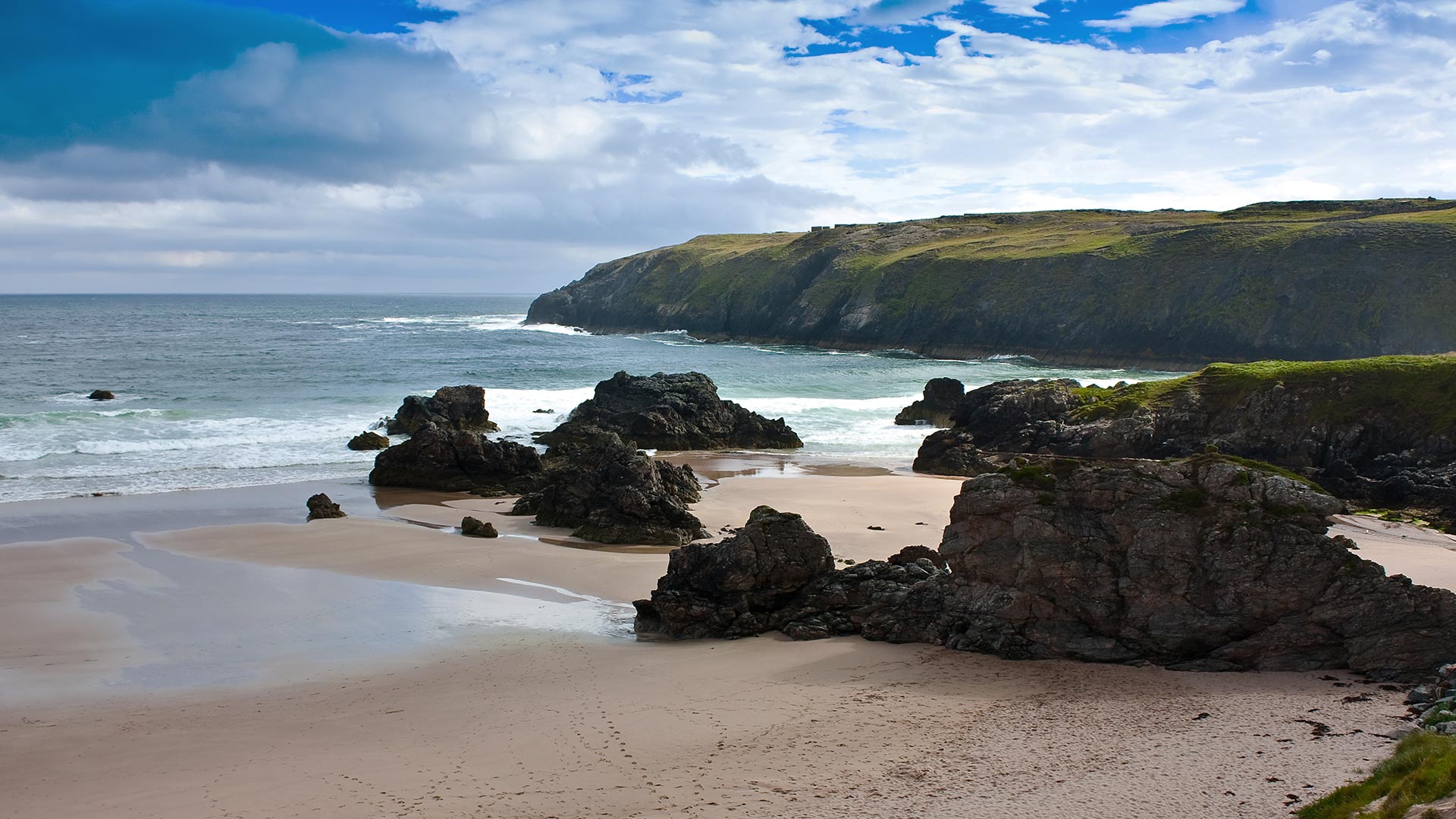
Road safety tips
While the Scottish road conditions are usually safe, in remote areas, it may require more care. This is especially true on the NC500 as most of the roads are either single carriageways or single-track roads.
Read on for our top safety tips for driving the North Coast 500:
1. Give yourself time to stop and react
Even if you’re used to driving, the driving conditions on the NC500 can be challenging. It’s best to not hurry through your drive and always be really careful.
Make sure to slow down when approaching sharp bends and blind summits. Also be on the lookout for hidden dips and concealed entrances. And take extra care on single-track roads, such as Bealach na Bà.
We also recommend driving at a speed that will allow you to stop if faced with an oncoming car or animal.
If you’re driving the North Coast 500 when it's very rainy, make sure to be extra cautious. Wet and slippery surfaces could make it harder to stop swiftly. If the road is flooded, it is best to avoid this section of the road, or drive slowly to pass it.
2. Watch the speed limit
Whenever you see the national speed limit sign on single carriage roads, it means the speed limit is 60 miles per hour. But this doesn’t mean you must drive that fast. Be careful and ease down to a safe speed, especially when it fits the driving conditions.
- Take 2 road trips in 1 with these Scotland and Ireland combination tours
- Related: A local expert's 5 best road trips in Scotland
3. Use passing places wisely
First and foremost, we urge you to use passing places and parking areas appropriately. Please do not stop in the middle of the road to take photos. And do not park on the road or in passing places to go for a hike or take photos.
If you come upon another car while using a single-track road, pull up in a passing place to let them pass, or they may do so to let you pass. You may have to reverse into a passing place if it’s the closest one.
Be mindful of others if you are driving slowly because you are being careful or want to enjoy the view. Make sure to stop in a passing place if a queue accumulates behind you. You should allow people to overtake you especially if you’re travelling a bit slower.
On the other hand, please make sure not to overtake a vehicle if it’s not absolutely necessary. As we've said it’s best to take your time and be patient.
4. Be careful of animals
Animals are often kept in fields throughout Scotland. However, many sections in the remote Northern Highlands are unfenced and animals roam free.
For this reason, make sure to keep an eye out for cows, sheep, deer and other animals. They may be roaming on or near the road, or deciding to cross the road unexpectedly.
5. Fuel when you can
The Northern Highlands region is remote and thus has limited services. We recommend topping up your car with petrol when you come across a service station.
Stock up on snacks too while you’re at it!
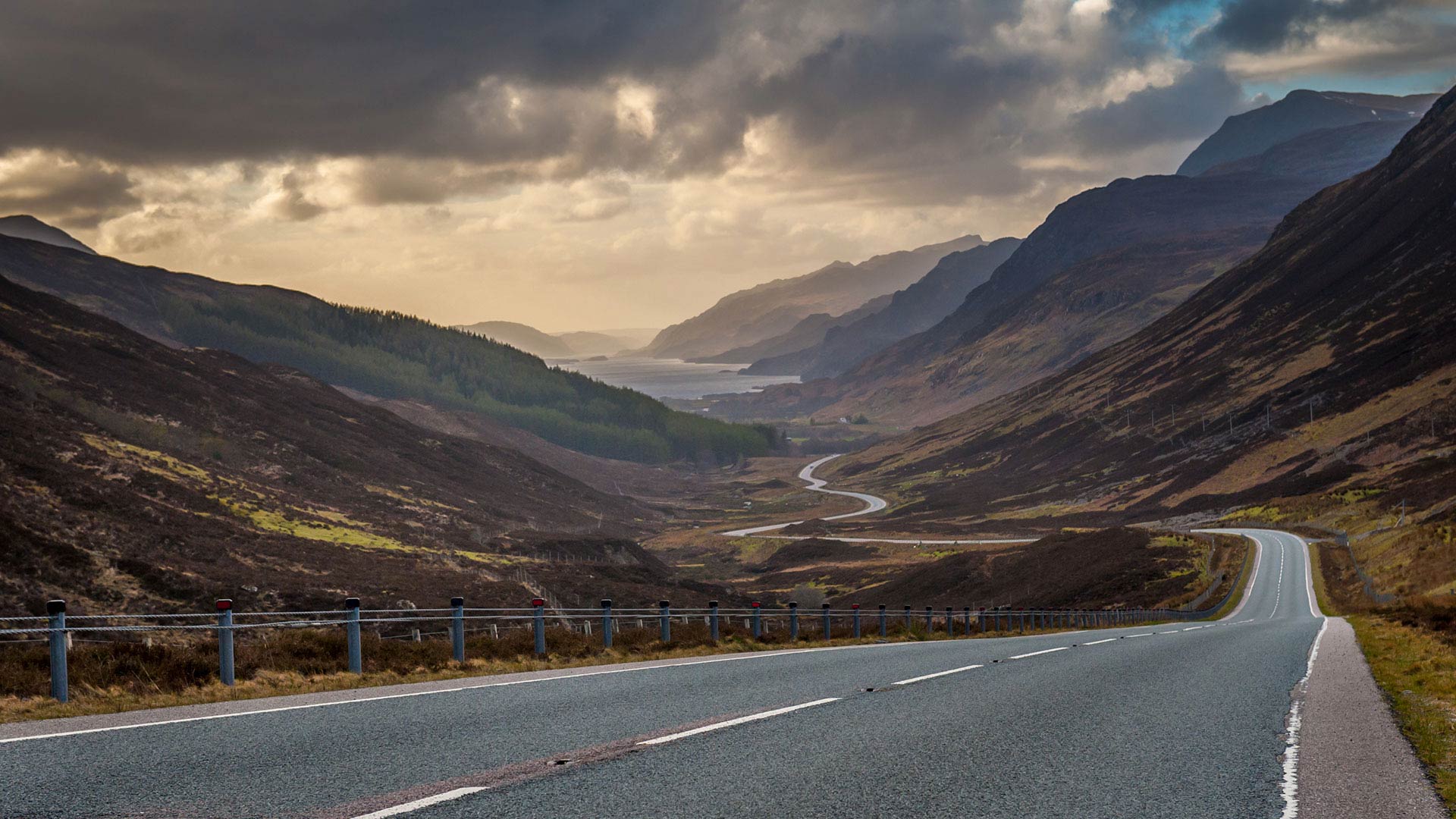
Suggested packing list
Our best recommendation, when it comes to knowing what to pack, is to be prepared for everything. Even if you come in summer or in the deep of winter, you may experience all seasons during your stay, or even a single day.
This also applies to the NC500, where you’re less likely to have shops. It’s even more important to be ready for any situation.
Here is what we recommend:
- Plenty of layers as it can be chilly in the Northern Highlands, even in summer
- A wind and waterproof layer for that typical Scottish weather
- Comfortable hiking or outdoor boots if you want to go walking
- Midge repellent as this region of Scotland is known for its volume of midges (small biting bugs) in summer
- And don’t forget to pack your camera to capture all the wonderful scenery!
Learn more about driving around Scotland in style: check our North Coast 500 packages that come with everything you need for a great road trip.
